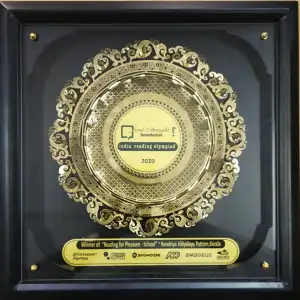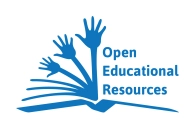His books continue to dominate the publishing landscape. When his most recent novel, The Broker, was published in January of 2005, it sold more than 80,000 copies in its first week of release. And that figure only includes sales at Borders, Barnes & Noble, and Waldenbooks.
Grisham has worn his success well over the years. He remains accessible, personable, and friendly. And he uses his powerful position to benefit a number of worthy causes. He endowed a visiting writer position at the University of Mississippi that attracts prestigious authors to Oxford each year. He also funded a number of fellowships so that talented students can study in the creative writing department at Ole Miss. He has built athletic fields in Mississippi and Virginia for local little leagues. And he was so affected by the devastation from Hurricane Katrina that he gave $5 million to the relief efforts.
We were honored that Grisham was willing to speak with us about the legends of his publication, his work habits, and his theories of writing suspense.
Slushpile: It’s the late eighties, you’re an attorney, you’ve got a family, and you’ve been a state legislator. What prompted you to add writing a novel to your already busy schedule?
Grisham: I was driven by a story. I created this wonderful courtroom drama set in a small town in Mississippi, as seen and told through the eyes of a young attorney, like myself. My motives were pure, I was not dreaming of best-seller lists and big fat royalty checks.
Slushpile: I recently read a claim (inaccurate, I believe) that you self-published A Time to Kill. Can you please set the record straight on how your novel came to be published by Wynwood Press?
Grisham: Wynwood Press was a new, small unknown publishing company in New York in 1989. Everybody else had passed on A Time to Kill, Wynwood Press took the gamble. Printed 5,000 hardback copies, and we couldn’t give them away. Wynwood later went bankrupt, or out of business.
Slushpile: Likewise, the story of The Firm publication has been retold and recast into legend. Like a tall tale, aspiring authors often recount this extraordinary set of circumstances and mix in a healthy dose of exaggeration and falsehood. What is the definitive account of how The Firm was published by Doubleday?
Grisham: A bootlegged copy of the manuscript of The Firm was misappropriated from some unknown place in New York, either the offices of a publisher or an agent. It surfaced in Hollywood, where some guy ran 25 copies, said he was my agent, and sent them to all of the major production companies. He got nervous when they started making offers. At some point he called my agent in New York, and the rest is history. It was an unbelievably lucky break, and I had nothing to do with it.
Slushpile: At what point during the success of The Firm or The Pelican Brief (or maybe it was another book) did you realize that this wasn’t going to go away, that your success wasn’t a temporary accomplishment, but that this was going to be your career?
Grisham: Just before the publication of The Firm in March of 1991, Doubleday offered a two book deal. At that point, I knew I could write books for a long time and not worry about the mortgage.
Slushpile: You’ve now authored about 18 books. How have your writing habits changed over the years? Do you do anything differently now as opposed to when you were writing A Time to Kill or The Firm?
Grisham: Not really. The books are written from August to November, from 6 a.m. to noon, five days a week. Old habits die hard.
Slushpile: Do you think your work has changed over the years?
Grisham: Not intentionally, and not to my knowledge. Read The Firm, then read The Broker, and see for yourself. There has been no deliberate effort to change writing style. I have tried over the years to become more efficient with words and produce 400 page manuscripts, as opposed to 500. Also because I have become lazier.
Slushpile: What are your goals for future books?
Grisham: My goal each time out is to write my best book ever. It’s that simple.
Slushpile: Rumors on the Internet claim you are working on a nonfiction book about a death row inmate who turned out to be innocent. Is this true? If so, can you please tell us about this project?
Grisham: Yes, it’s my first work of nonfiction. It’s a story of a death row inmate in Oklahoma who came within five days of being executed for a murder he did not commit, and was later exonerated by DNA evidence.
Slushpile: Do you have any writing superstitions? Do you have any special habits, good luck charms, or talismans that you use?
Grisham: Not really. I write at the same place, same table, same chair, with the same cup and type of coffee. The same computer has produced the last fifteen books, and it’s about to give out. I’m not the superstitious type.
Slushpile: How do you think the publishing industry as a whole has changed since the late eighties, early nineties when you were first established? Do you think it has changed for the better or for the worse?
Grisham: Obviously, there are fewer small publishers, more larger ones, much more consolidation. Truthfully, I don’t spend a lot of time studying the publishing industry. That may sound odd, but I concern myself with what I am writing. I rely on Doubleday to take care of the rest.
Slushpile: Once you’ve turned in a manuscript, how long does it take Doubleday to get it on the shelves.
Grisham: The first draft is usually in by November first, then a furious three weeks of revisions, with the goal of finishing finally by Thanksgiving of each year. The books go to press on December the first, then to the warehouses. They usually go on sale February first.
Slushpile: Clive Cussler’s character Dirk Pitt has a Doxa diving watch as sort of a trademark item. Is there something you own or enjoy that you give to your characters? Airplanes seem to appear frequently in your work. Is this a fascination of yours?
Grisham: Nothing in particular. I started flying and buying airplanes about 10 years ago, but it’s not a passion.
Slushpile: Your fellow Doubleday author Dan Brown is enjoying a phenomenal amount of success and J.K. Rowling seems to set a new publishing record every day. As one of the few writers who know what they are experiencing, what words of advice would you give to Brown and Rowling?
Grisham: Everything is temporary. The books will not always sell the way they are selling now, so enjoy the success but don’t let it go to your head.
Slushpile: Both of those authors seem more private, more reticent with interviews and public appearances. If you could start all over again, do you think you might try to reserve a little more privacy for yourself and your family?
Grisham: Probably so, but we’ve always been extremely private.
Slushpile: What are you reading these days? What is the last book (fiction or nonfiction) that really excited and enthralled you?
Grisham: I’m reading a biography of Willie Morris. The last good book I read was The March by E.L. Doctorow.
Slushpile: Your friend Stephen King got a lot of attention, deservedly so, for stepping in and helping out Ron McLarty by endorsing The Memory of Running. He also got a lot of attention for taking the publishing industry to task in its rejection of McLarty’s work. Have you ever been tempted to help an unknown writer in such a public way? Would you ever do such a thing if a book really moved you?
Grisham: I look at more unpublished manuscripts than I care to admit. With each one, I am always hoping to discover a great writer. I have yet to do so, but if it happened I’m sure I would make a few phone calls.
Slushpile: You have helped writers by establishing the John & Renee Grisham Visiting Writer in Residence program that bring authors to the University of Mississippi to teach each year. T.R. Pearson was the first writer to hold this position and you became friends with him. How did you meet Mr. Pearson?
Grisham: We met through mutual friends at Square Books in Oxford.
Slushpile: You never took any writing classes but have said that you wished you did. If you could study with any writer, who would you choose?
Grisham: Mark Twain.
Slushpile: Aspiring authors are always told the importance of getting the “right” agent. What advice would you give them about selecting the right agent?
Grisham: Take a long look at the other authors represented by the same firm.
Slushpile: How involved is your editor? How closely does he work with you? What is your working process like?
Grisham: Editing is not an enjoyable process. The editor, who is also my agent, looks at the second draft and makes extensive notes. Then I do the third draft, and the fourth and the fifth. The mistake that many big authors make is to get lazy and shy away from careful editing. You can usually tell it in their work.
Slushpile: I know you’re swamped with strangers approaching you with a manuscript to read, or a CD to hear, or a movie script to review, or a legal case that “only you can solve.” What is the craziest thing you’ve ever had thrust upon you?
Grisham: Nothing too crazy, just the usual assortment of manuscripts that end up on the front porch or at the office.
Slushpile: How many times a week does someone come up to you and say “I’ve got this fantastic idea for a book. I’ll tell it to you, you write it, and we’ll split the profits.”
Grisham: They don’t always mention splitting the profits. That normally comes in the second conversation. But, about twice a month someone will say, “Hey, I’ve got a great idea for your next book.” At which time I always say, “So do I.”
Slushpile: If you were starting out today, how would you go about finding an agent or publisher?
Grisham: I’d do it the same way I did it 16 years ago. I researched the agents, made a list of about 20 I thought looked promising, and did multiple submissions to them. If your writing is good, an agent will see it, sooner or later. There are many agents in New York, and they are all looking for authors.
Slushpile: Let’s say an aspiring author can focus on writing a music column that will get him a lot of exposure, but it’s not fiction, it’s not his goal for writing. Should he concentrate on getting the exposure and building a name for himself? Or, should he focus on making his fiction as good as possible and worry about exposure later?
Grisham: Make the fiction as good as possible, and everything else will fall into place.
Slushpile: The Broker features quite a bit of discussion about Italian culture, food and geography. These sections are crucial to the plot, but there is still a danger of making the novel too much of a travel guide instead of a thriller. How did you balance the pacing of these discussions without losing too much of the actual “story” sections?
Grisham: When you write suspense, you cannot spend too much time with other elements of the story, such as setting, food, wine, relationships, etc. It’s a long list. You have to continually keep in mind that you are trying to make sure the pages are turning at a rapid rate.
Slushpile: How do you develop your plots? How detailed and developed are your plots when you start writing the novel? Do you use outlines or any other mechanism?
Grisham: Outlines are crucial. I start with Chapter 1 and write a paragraph. Then Chapter 2, then Chapter 3. When I get to Chapter 40 the book had better be finished or I am in trouble. The outlining process is no fun, but it forces the writer to see the entire story.
Slushpile: Some thriller or mystery writers focus almost exclusively on plot while others try to create a specific atmosphere and still others develop character and so forth. What is your main focus when telling a story?
Grisham: Plot.
Slushpile: What is your single-best, most-important, can’t-live-without writing tip you would offer to aspiring authors?
Grisham: Write at least one page every day, without fail. If you’re trying to write a book, and you’re not writing at least one page a day, then the book is not going to get written.
Slushpile: What is your single-best, most-important, can’t-live-without publishing tip you would offer to aspiring authors struggling to break into print.
Grisham: Get a good agent.
Courtesy: http://www.slushpile.net











































































